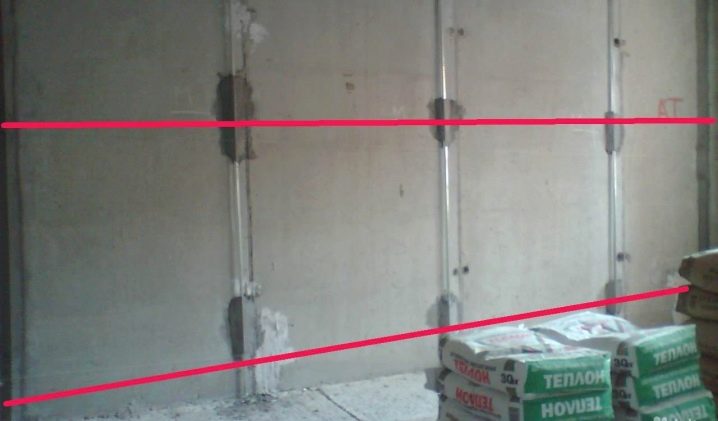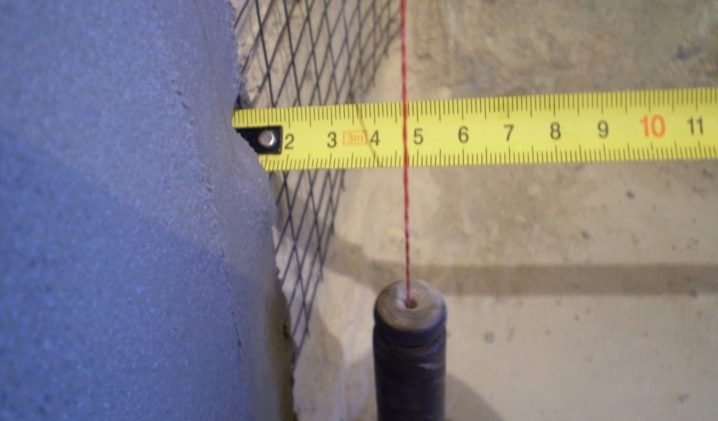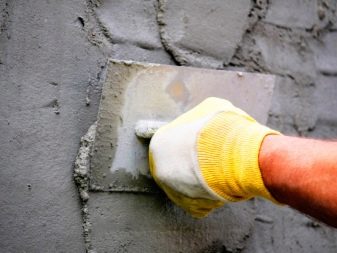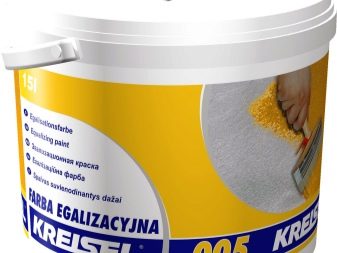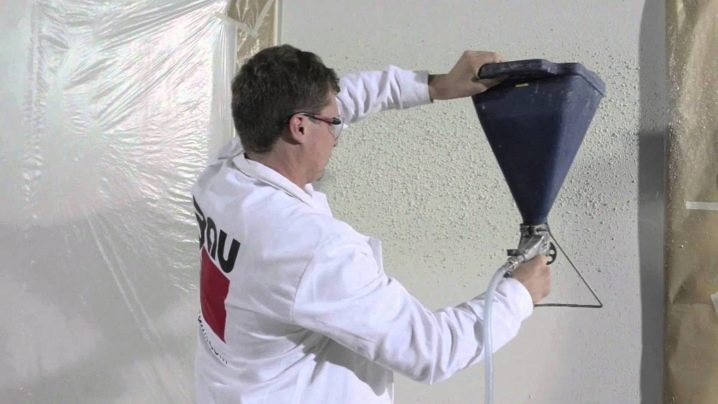How to calculate plaster consumption per 1 m2 of wall?
The quality of wall surfaces is one of the most important factors affecting their decorative properties. Therefore, plastering is carried out almost always in front of all the finishing work. Today the market of building materials is saturated with many mixtures. Some of them are used for alignment, while others are used to create decorative bases.
Special features
Plaster is a special composition, which after solidification form a durable layer. A feature of materials is the possibility of its uniform distribution over the surface to create a flat plane. One of the criteria that pay attention to when choosing plasters for walls is their consumption.
The volume of production per 1 m2 depends on several factors:
- Type of plaster. Today, for the production of such compounds using cement, plaster or special polymers. All of these products are dense and coated. Therefore, the consumption of room plaster can vary over a wide range.
- Surface structure The walls of any apartment initially are not perfectly smooth. The base can have many curvatures that do not allow to evenly calculate the material consumption for its coating.
Many plasters are applied, if the curvature of the walls does not exceed 2.5 cm. When this indicator is much more, specialists carry out plastering in several layers using special leveling beacons. But it should be understood that the thicker the plaster, the higher the risk of cracking and falling off over time. To eliminate such consequences, apply various reinforcing mesh to strengthen the frames.
How to calculate?
The calculation of the plaster is an important step, which is desirable to carry out before the start of all work. This will allow you to know how many bags you need to purchase to cover one square meter of the wall.
Before proceeding to the calculations, you should carefully prepare the basis. An old coating is removed from the walls, which is not firmly supported on them. It is also important to level all large protrusions, as they will affect the amount of plastering solution.
The calculation technology involves several sequential actions:
- The first step is to determine the degree of curvature. This indicator indicates how strongly some areas have surface drops. To do this, expose beacons on the walls, which are aligned using a laser level. They should be fixed on the same solution that will be used for plastering (lime, cement).
To better navigate and measure the curvature, it is possible to attach thin threads to them. Lighthouses desirable to have on the entire surface of the wall.
- Then measure the thickness of the deviation between the plane, the beacon and the base itself. The number of measurements should be more than 3 pcs. The more such control points, the more accurately it will be possible to determine the desired characteristic.
Calculate the optimal layer thickness is quite simple.To do this, all the obtained values are plus, and then divided by the number of measurements. It turns out the arithmetic average.
- Knowing the average thickness of the future layer, you can begin to calculate the number of plaster compositions. This process is relatively simple. Each manufacturer of plaster indicates on the package the optimum consumption of the mixture per 1 m 2 with a layer thickness of 1 cm. Often, 8.5 kg is considered the norm for the volume indicated earlier.
Please note that manufacturers indicate the amount of dry mix, rather than the prepared solution, where more water can be added.
To find out the consumption for your particular case per unit area, you just need to proportionally increase the value depending on how thicker the layer is than 1 cm. For example, if you need to put 2 cm of plaster, then at a consumption of 8.5 kg you need 17 kg .
At this, the calculation technology ends. All other operations are carried out proportionally, depending on the initial characteristics. For example, to calculate 40 square meters. m, you just need to multiply the figure obtained earlier by 40. Thus, you can calculate the volume of material, regardless of the number of squares of the wall.
Having learned the full amount of plaster, it is easy to calculate the number of bags of DSP, which are needed to cover a certain area. To do this, all the weight of the mixture is simply divided by the weight of one bag (in most cases it is 25 kg).
Please note that when calculating bags, the resulting figure should be rounded up, if it is not integer. Theoretically, this will allow you to purchase a small stock of the mixture, which is almost always not superfluous.
You will learn about the important details in the process of calculating plaster by watching the following video.
Composition
It should be understood that the consumption of plaster depends primarily on its composition.
It is necessary to highlight several indicators for popular plasters:
- Gypsum. Leaves such a mixture for plastering the smallest amount. Average consumption reaches 9 kg / m2.
- Cement. Mixtures of this kind are the most dense, as they consist of sand. The consumption of such products already reaches 17 kg. Therefore, the walls must be strong to withstand such additional weight.
- Textured and decorative plasters are spent economically. Depending on the composition and purpose, they will need from 1.5 to 3 kg / m2.
These values are not universal, since everything depends on the composition of the product. Therefore, many well-known manufacturers of their consumption standards, which is important to pay attention to when choosing trains.
Manufacturers
The popularity of plasters led to the appearance on the market of various types of such products. Among all this diversity can be noted such popular brands of plaster mixtures:
- Knauf - products from the German manufacturer. Mixtures are of high quality and plasticity. The company produces several varieties of plaster compositions that can be used both inside and outside buildings.
Here you can find and frost-resistant species.
- Krayzel - another German manufacturer of plasters. The product range is presented as a classic mixtures, and compositions for automatic application. Produce products with the addition of acrylic, cement or special silicates.
- Bolars - Russian plaster, which is represented by several types of mixtures. To improve the performance of the developers add special polymers. The company produces both conventional gypsum mortars and frost-resistant products for facades.
- Weber Stuk and Vetonit. Products are manufactured by one manufacturer. The first type of plaster refers to moisture-resistant, as it is based on a special cement mixture. The second representative is a universal gypsum plaster, which can only be used in dry rooms.
- "Miners". Under this brand produce classic plaster plaster. They are characterized by efficiency, high elastic properties and the ability to pass air. Can be applied only in dry rooms. The material is easy to apply, which allows you to get a fairly thin layer of topcoat.
- Ceresit. The company specializes in various construction mixtures. It produces a variety of different plaster compositions. Especially popular are cement and plaster mixes of universal purpose. The products are of high quality and unique technical characteristics. Also in the range you can find and decorative plaster such as "Bark-eater", etc.
Tips and tricks
The purpose of plastering is to obtain a smooth surface, which will then be easy to use for decorative finishing.
When calculating the number of such mixtures should be considered a few simple tips:
- The minimum thickness of the applied layer must be several millimeters greater than the height of the highest point. Therefore, it is important to use beacons, allowing you to see this figure visually.
- If you do not have experience in decorating the premises, do not try to get a perfectly even layer without the use of beacons in one approach. Many specialists need a certain amount of time and experience with such surfaces.
- To simplify the technology for calculating structural or repair plasters, you can use special calculators, which are quite a lot on the Internet.
- It is desirable to expose beacons across the entire surface of one of the walls. If you make a start only on one of the sections, then there is no guarantee that you can align the rest of the area perfectly evenly.
- Acquire a quantity of plaster a little more than you received after such operations. This is necessary because the consumption of the mixture increases due to careless use and other factors.
The technology of calculating the plaster mixture is a fairly simple operation.requiring only care and correct measurement of height differences.







